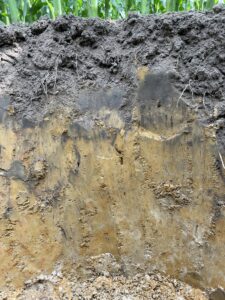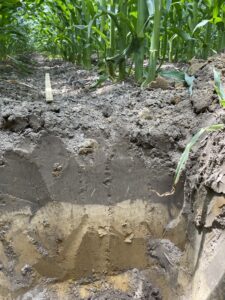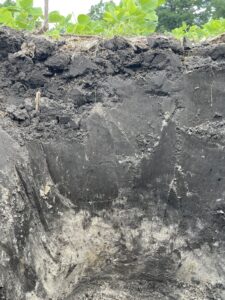No-Till Management
go.ncsu.edu/readext?941070
en Español / em Português
El inglés es el idioma de control de esta página. En la medida en que haya algún conflicto entre la traducción al inglés y la traducción, el inglés prevalece.
Al hacer clic en el enlace de traducción se activa un servicio de traducción gratuito para convertir la página al español. Al igual que con cualquier traducción por Internet, la conversión no es sensible al contexto y puede que no traduzca el texto en su significado original. NC State Extension no garantiza la exactitud del texto traducido. Por favor, tenga en cuenta que algunas aplicaciones y/o servicios pueden no funcionar como se espera cuando se traducen.
Português
Inglês é o idioma de controle desta página. Na medida que haja algum conflito entre o texto original em Inglês e a tradução, o Inglês prevalece.
Ao clicar no link de tradução, um serviço gratuito de tradução será ativado para converter a página para o Português. Como em qualquer tradução pela internet, a conversão não é sensivel ao contexto e pode não ocorrer a tradução para o significado orginal. O serviço de Extensão da Carolina do Norte (NC State Extension) não garante a exatidão do texto traduzido. Por favor, observe que algumas funções ou serviços podem não funcionar como esperado após a tradução.
English
English is the controlling language of this page. To the extent there is any conflict between the English text and the translation, English controls.
Clicking on the translation link activates a free translation service to convert the page to Spanish. As with any Internet translation, the conversion is not context-sensitive and may not translate the text to its original meaning. NC State Extension does not guarantee the accuracy of the translated text. Please note that some applications and/or services may not function as expected when translated.
Collapse ▲No-till management, zero-till, is a conservative management practice that protects soil structure by involving the least amount of soil disturbance possible when farming. No-till is a restricted tillage which disturbs soil only in the crop row to open, place seeds and close the seedbed. In order to promote soil health, preserve water, reduce soil erosion, increase biodiversity, and raise crop yield, management practices that involve no-till are crucial for sustainable farming systems. An outline of the no-till management’s guiding principles, advantages, and factors is provided in this post.
Figure 1. Soil profiles under no-till managed coastal plain soils.
Minimal soil disturbance, permanent soil cover, and maximizing the benefits from crop diversification and rotation are among principles of no-till management.
Minimal soil disturbance by no-till benefits soils in several pathways. No-till entails planting seeds directly into the untilled soil without plowing or extensive tillage, leaving crop residues on the soil’s surface. Thus, minimal soil disturbance by no-till protects the soil structure, soil organic matter level and beneficial biological communities in the soil, and enhances soil health.
No-till also benefits soil health by providing a permanent soil cover. By keeping soil surface covered by crop residues, no-till management can prevent or lower erosion as well as water runoff. The residues also maintain soil moisture, moderate soil temperature, and provide a habitat for beneficial species.
Another principle of no-till is maximizing crop rotation and diversification. Crop rotation can help break pest and disease reproductive cycles, improve nutrient cycling, improve soil fertility, and enhance soil health. Cover crops are frequently included in no-till systems in between rotations of cash crops to give extra benefits like weed control and nitrogen fixation.
In general, aforementioned principles of no-till management benefits soils by improving soil health, controlling soil erosion, providing soil and water conservation, weed and pest management, and economical savings. By protecting organic matter, developing soil structure, and boosting microbial activities, no-till management encourages the development of a healthy soil ecosystem. Higher agricultural productivity is the result of improved soil fertility, nutrient cycling, and water infiltration capacity. No-till farming also greatly lowers soil erosion brought on by wind and water by maximizing the surface coverage with crop residue management. As a result, rich topsoil is preserved, sedimentation in waterways is avoided, and long-term agricultural land protection takes place. No-till techniques improve soil structure and preserve surface residues, which reduce water runoff and promote soil and water conservation. This lessens the demand for irrigation and conserves water resources by enabling crops to receive water more effectively. By utilizing cover crops and crop rotation, no-till practices can reduce the need for pesticides by suppressing weed development. Additionally, the retention of advantageous organisms in non-tilled soil can help with organic pest management and lower the demand for synthetic insecticides. By lowering the labor and fuel costs associated with conventional tillage, no-till management can result in cost savings for producers. Additionally, it reduces machinery deterioration, which lowers maintenance and replacement expenses.
For those who are currently not practicing no-till, there are few considerations for implementing the no-till management in their fields. Those include equipment adjustments, weed management, modifying nutrient management, and thorough assessment of your present soil condition during the period of transitioning into no-till. Like any other tillage method, it is essential to check whether the soil conditions are favorable (not too wet and dry enough) for planter passing. To plant seeds effectively in no-till systems, it is necessary to use specialized planting tools that can efficiently cut through surface residues and firm soil. Farmers beginning the switch to no-till management may need to make equipment purchases (for row cleaning, fertilizer and soil amendment incorporation) and modify their farming techniques accordingly. A no-till planter can be used on row crops and a seed drill on other crops grown with narrow row spacing. The equipment adjustments should ensure that they are adaptable to varied soil conditions and be able to place seeds precisely at a specified depth with proper seed soil contact and coverage. In addition, it may also be necessary to utilize other techniques to control persistent weeds, such as cover crops, selective herbicide use, or mechanical weed control.. Moreover, no-till systems may need to modify their nutrient management procedures since the lack of tillage could influence the availability and distribution of nutrients in the soil. In soils that have a history of routine intensive tillage, it can take some time for the soil ecosystem to adapt before yield increases can be realized. This can be more challenging if the soil was previously compacted with nutrient and organic matter depletion. Usage of cover crops after transitioning to no-till management can help reduce compaction, however, this can be harder to achieve and can take years.. In such soils, it is important to take steps to improve soil health and reduce compaction before making the transition to no-till management. Another conservation tillage practice like strip tillage, where soil is disturbed only in narrow strips along the crop row can be adopted initially to alleviate plow layer compaction in the seed zone before completely converting to no-till management. Equipment supporting in-row subsoiling along with no-till planting can be used if subsurface compaction is present. Optimal nutrient levels for crop growth can be maintained with the use of routine soil testing, strategic fertilizer application, and the use of cover crops. This could also apply for lime and gypsum usage especially for coastal regions (Please see soil fertility portal for further details on nutrient and lime management). Furthermore, producers may experience an initial learning curve to comprehend and adjust to new management techniques as they switch from conventional tillage to no-till management. In order to properly apply this approach join our extension and education activities.
No-till management has many sustainable, agronomic, economic, and environmental long-term advantages, making it a promising strategy for the future of agriculture. It is a conservative management practice which supports resilient and sustainable agricultural systems by minimizing soil erosion, enhancing soil health, conserving water, and enhancing insect and weed control. Although adopting and implementing no-till has its own difficulties, the prospects of less labor, time, fuel use requirements, enhanced soil productivity, and future potential for carbon/nutrient trading markets can make it worthwhile for farmers to move forward with the transition.
Please check for factsheets about conservation management practices that involve no-till.
Best Management Practices for Agricultural Nutrients
Soil Health: What Does it Mean in North Carolina?
Long-Term Tillage Effects on Corn and Soybean Yield in the Piedmont





